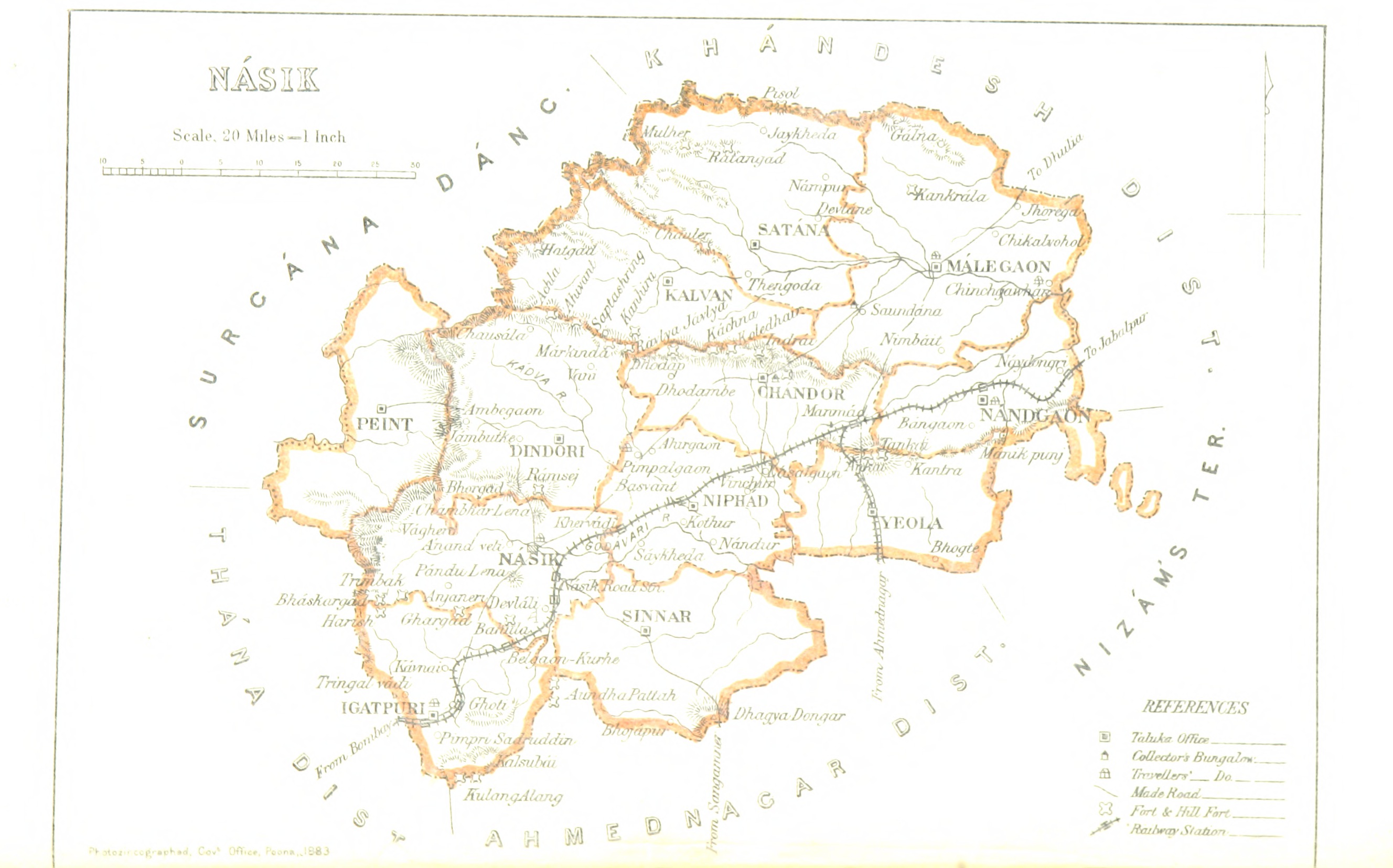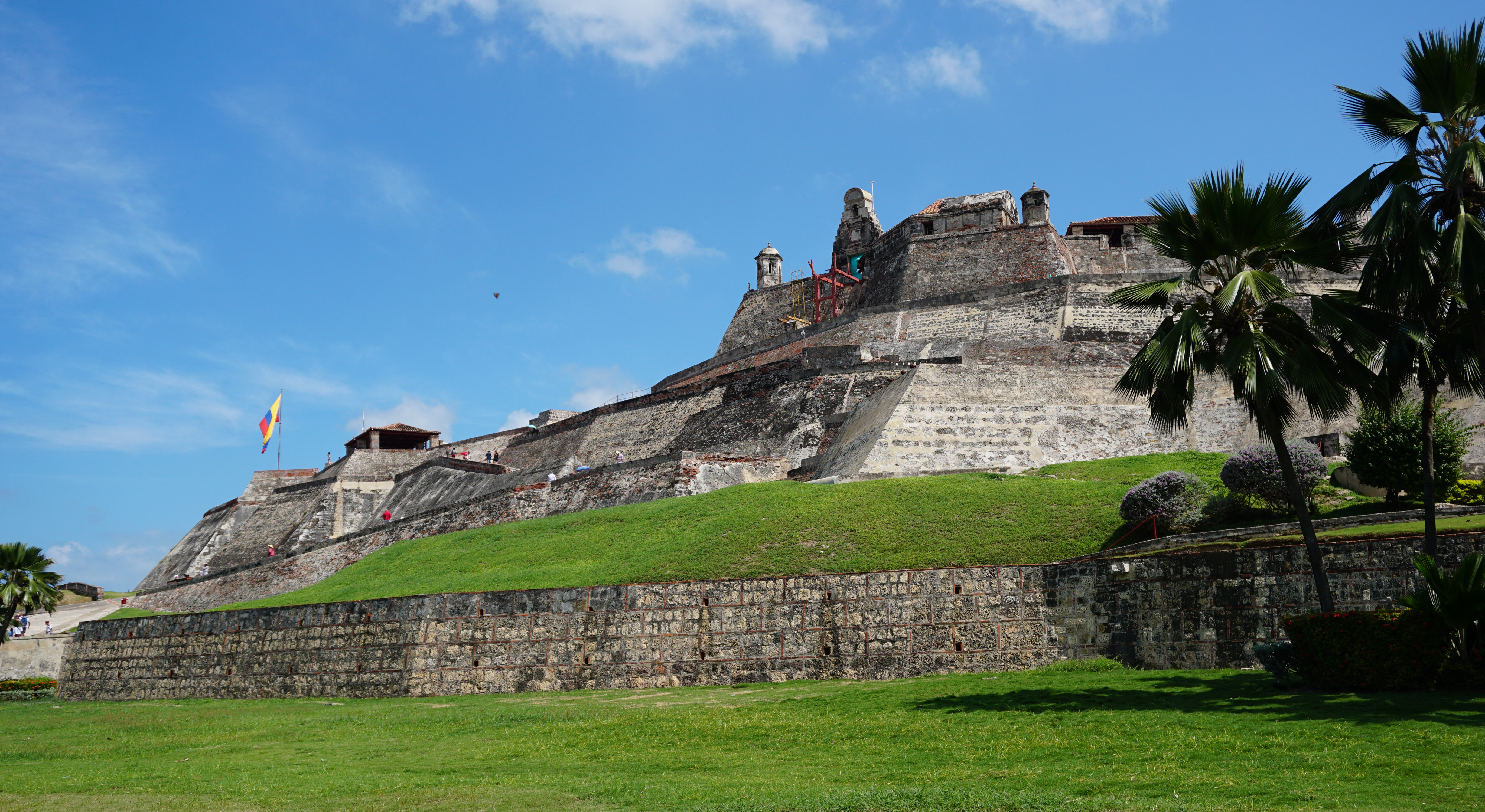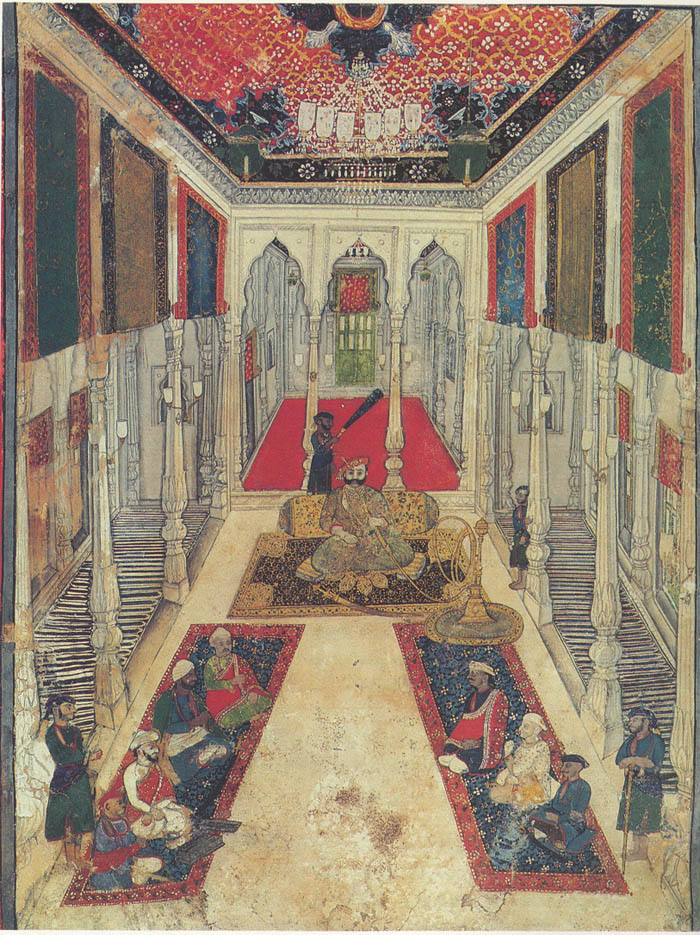|
Rajdher Fort
Rajdeher Fort ( mr, राजधेर किल्ला) is a fort located from chandwad, Nashik district, of Maharashtra. This fort is an important fort in Nashik district. History This fort was built earlier than Yadava period. This fort was under the control of Yadavas in 1216-17. This fort was under control of Alauddin Khalji and later under the Faruki. In 1601 the Khandesh Suba was in the hands of Moghuls, this fort was handed over to Ramajipant of Bhadgaon in return of the victory over Ashirigad. The Bakhar records depict this fort to be under the control of Shivaji Maharaj. In 1752 under the Treaty of Bhalki, this fort was surrendered by Nizam to Peshwa. In 1762 Madhavrao Peshwa handed over this fort to Vitthal Shivdev for yearly revenue of Rupees ten thousand for the fort. In 1764 the Pawar brothers of Chalisgaon revolted against Peshwa, which was crushed by Bajirao-II by sending Vittalrao Vinchurkar to capture Chalisgaon, the Rajdeher fort was also brought under the ... [...More Info...] [...Related Items...] OR: [Wikipedia] [Google] [Baidu] |
Nashik District
Nashik district, also known as Nasik district, is a district in Maharashtra, India. The city of Nashik is the administrative headquarters of the district. Nashik is well known for the production of wine. Nashik is also known as Mini Maharashtra, because the climate and soil conditions of Surgana, Peth, Igatpuri resembles with Konkan. Niphad, Sinnar, Dindori, Baglan blocks are like Western Maharashtra and Yeola, Nandgaon, Chandwad blocks are like Vidarbha Region. Nashik is the biggest city in the district while Malegaon is the second biggest city. Manmad, Igatpuri, sinnar are some of the big cities situated in the Nashik District. Manmad is one of the biggest railway junction in india while the city of Malegaon is famous for its powerloom. Nashik district is the third largest district in Maharashtra state in terms of population of 8,107,187 and occupying an area of 15,582 square kilometres in the north Maharashtra region. It is bounded by Dhule District to the north, Jalgao ... [...More Info...] [...Related Items...] OR: [Wikipedia] [Google] [Baidu] |
List Of Forts In Maharashtra
This is list of forts in Maharashtra a state of India # Achala Fort (Nashik) # Agashi Fort # Ahmednagar Fort # Ahivant Fort # Ajinkyatara # Akola Fort # Akluj Fort # Alang Fort # Ambolgad Ambolgad is a village near Jaitapur Nuclear Power Project in the Ratnagiri district in Maharashtra, India. A Defence Officers Group named DARIYA (दरिया) has been formed by Col Dhanajirao Patil for bringing this village on World Map.{ ... # Anjaneri # Anjanvel Fort # Ankai Fort # Antur Fort # Arnala fort # Asheri fort # Asava fort # Avchitgad # Aurangabad Fort # Avandha Fort # Balapur Fort # Ballarpur Fort # Bankot fort # Bahadur Fort # Belapur Fort # Birwadi fort # Bitangad # Bhagwantgad # Bhairavgad # Bhamer Dhule # Bharatgad # Bhaskargad/Basgad # Bhavangad Fort/Bhondgad # Bhorgiri fort # Bhudargad Fort # Bhupatgad Fort # Bhushangad # Bombay Castle # Castella de Aguada/Bandra Fort # Chanda Fort # Chandan Fort # Chandragad/Dhavalgad # Chandwad fort # Chauler Fort/Chaurgad ... [...More Info...] [...Related Items...] OR: [Wikipedia] [Google] [Baidu] |
Forts In Nashik District
A fortification is a military construction or building designed for the defense of territories in warfare, and is also used to establish rule in a region during peacetime. The term is derived from Latin ''fortis'' ("strong") and ''facere'' ("to make"). From very early history to modern times, defensive walls have often been necessary for cities to survive in an ever-changing world of invasion and conquest. Some settlements in the Indus Valley civilization were the first small cities to be fortified. In ancient Greece, large stone walls had been built in Mycenaean Greece, such as the ancient site of Mycenae (famous for the huge stone blocks of its 'cyclopean' walls). A Greek '' phrourion'' was a fortified collection of buildings used as a military garrison, and is the equivalent of the Roman castellum or English fortress. These constructions mainly served the purpose of a watch tower, to guard certain roads, passes, and borders. Though smaller than a real fortress, they acted ... [...More Info...] [...Related Items...] OR: [Wikipedia] [Google] [Baidu] |
Buildings And Structures Of The Maratha Empire
A building, or edifice, is an enclosed structure with a roof and walls standing more or less permanently in one place, such as a house or factory (although there's also portable buildings). Buildings come in a variety of sizes, shapes, and functions, and have been adapted throughout history for a wide number of factors, from building materials available, to weather conditions, land prices, ground conditions, specific uses, prestige, and aesthetic reasons. To better understand the term ''building'' compare the list of nonbuilding structures. Buildings serve several societal needs – primarily as shelter from weather, security, living space, privacy, to store belongings, and to comfortably live and work. A building as a shelter represents a physical division of the human habitat (a place of comfort and safety) and the ''outside'' (a place that at times may be harsh and harmful). Ever since the first cave paintings, buildings have also become objects or canvasses of much art ... [...More Info...] [...Related Items...] OR: [Wikipedia] [Google] [Baidu] |
List Of People Involved In The Maratha Empire
This is a listing of people who were involved in the formation and growth of Maratha Empire. The Maratha Empire or the Maratha Confederacy was an Indian power that existed from 1647 to 1818. At its peak, the empire covered a territory of over 2.8 million km². The Marathas are credited to a large extent for ending the Mughal rule in India. People References See also * Javji Bamble * Govind Rao Khare * Chatrapati Shivaji * Maratha Empire * Bhat family {{DEFAULTSORT:People involved in the Maratha Empire India history-related lists Maratha Empire The Maratha Empire, also referred to as the Maratha Confederacy, was an early modern Indian confederation that came to dominate much of the Indian subcontinent in the 18th century. Maratha rule formally began in 1674 with the coronation of S ... ... [...More Info...] [...Related Items...] OR: [Wikipedia] [Google] [Baidu] |
Military History Of India
The predecessors to the contemporary Army of India were many: the sepoy regiments, native cavalry, irregular horse and Indian sapper and miner companies raised by the three British presidencies. The Army of India was raised under the British Raj in the 19th century by taking the erstwhile presidency armies, merging them, and bringing them under the Crown. The British Indian Army fought in both World Wars. The armed forces succeeded the military of British India following India's independence in 1947. After World War II, many of the wartime troops were discharged and units disbanded. The reduced armed forces were partitioned between India and Pakistan. The Indian armed forces fought in all fours wars against Pakistan and two wars against People's Republic of China in 1962 and 1967. India also fought in the Kargil War with Pakistan in 1999, the highest altitude mountain warfare in history. The Indian Armed Forces have participated in several United Nations peacekeeping operati ... [...More Info...] [...Related Items...] OR: [Wikipedia] [Google] [Baidu] |
Maratha Titles
The following list includes a brief about the titles of nobility or orders of chivalry used by the Marathas of India and by the Marathis/ Konkanis in general. Titles used by the Maratha Royals The titles used by royalty, aristocracy and nobility of the Maratha Empire *Chhatrapati: Chhatrapati is an Indian royal title most equivalent to a King or an Emperor. It means the 'Lord of the Parasol' and is a title conferred upon the founder of Maratha Empire, Chhatrapati Shivaji. The title is also used by Shivaji's descendants. * Maharaj: The English equivalent of Maharaj is great king. It is a title first conferred upon Chhatrapati Shivaji's father Shahaji Raje Bhosale. * Maharani: The English equivalent of Maharani is great queen. It is a title first used by Tarabai, as regent of marathas empire . * Raje: The English equivalent of Raje is Your Majesty. It is a title first conferred upon Chhatrapati Shivaji's grandfather Maloji Raje Bhosale * Kshatriya Kulavantas: It means 'The Hea ... [...More Info...] [...Related Items...] OR: [Wikipedia] [Google] [Baidu] |
Maratha Army
The Maratha Army was the land-based armed forces of the Maratha Empire, which existed from the late 17th to the early 19th centuries in India. 17th century Chhatrapati Shivaji Maharaj, the founder of Maratha Empire, raised a small yet effective land army. For better administration, Shivaji abolished the land-grants or ''jagir'' for military officers and instituted a system of salary or cash payment for their services. During the 17th century the Maratha Army was small in terms of numbers when compared to the Mughals, numbering some 100,000. Shivaji gave more emphasis to infantry as against cavalry, considering the rugged mountainous terrain he operated in. Further, Shivaji did not have access to the North Indian Mughal dominated horse markets. During this era, the armies of the Marathas were known for their agility due to the light equipment of both infantry and cavalry. Artillery was mostly confined to the Maratha fortresses, which were located on hilltops, since it gave a strate ... [...More Info...] [...Related Items...] OR: [Wikipedia] [Google] [Baidu] |
Battles Involving The Maratha Empire
The Maratha Conquests were a series of conquests in the Indian subcontinent which led to the building of the Maratha Empire. These conquests were started by Shivaji in 1659, from the victory at the Battle of Pratapgad against Bijapur. The expansion of the empire was limited and interrupted by the Mughal conquests of south India by Mughal emperor Aurangzeb. Marathas were forced to defend their territories against the overwhelmingly strong Mughal army in the 27 years long Deccan wars. They were able to defend their territories and gain an upper hand over Mughals in the sustained conflict. Afterwards, the Marathas conclusively defeated and overtook major territories of the Mughal Empire in the Indian subcontinent and its vassals. It ended with the eventual fall of the Maratha Empire after the Anglo-Maratha Wars. Background Shivaji's father Shahji had earlier served as a Jagirdar under Adil Shah. Shivaji inherited this land and later revolted against the Adil Shahi dynasty, car ... [...More Info...] [...Related Items...] OR: [Wikipedia] [Google] [Baidu] |
Maratha War Of Independence
The Marathi people (Marathi: मराठी लोक) or Marathis are an Indo-Aryan ethnolinguistic group who are indigenous to Maharashtra in western India. They natively speak Marathi, an Indo-Aryan language. Maharashtra was formed as a Marathi-speaking state of India in 1960, as part of a nationwide linguistic reorganization of the Indian states. The term "Maratha" is generally used by historians to refer to all Marathi-speaking peoples, irrespective of their caste; however, now it may refer to a Maharashtrian caste known as the Maratha. The Marathi community came into political prominence in the 17th century, when the Maratha Empire was established under Chhatrapati Shivaji; the Marathas are credited to a large extent for ending Mughal rule over India. History Ancient to medieval period During the ancient period, around 230 BC, Maharashtra came under the rule of the Satavahana dynasty, which ruled the region for 400 years.India Today: An Encyclopedia of Life in the ... [...More Info...] [...Related Items...] OR: [Wikipedia] [Google] [Baidu] |
List Of Maratha Dynasties And States
This is a list of Maratha dynasties and Maratha princely states. Historical Maratha dynasties with original clans spread globally † - States annexed by the British East India Company Maratha Princely States The Marathas ruled much of India in the period immediately preceding the consolidation of British rule in India. The Maratha states came to form the largest bloc of princely states in the British Raj, in terms of territory and population. The Maratha Salute state and Head of State by precedence * Baroda, title Maharaja Gaikwad, Hereditary salute of 21-guns * Gwalior, title Maharaja Shinde, Hereditary salute of 21-guns * Indore (Holkar State), title Maharaja Holkar, Hereditary salutes of 19-guns * Kolhapur State, title Maharaja Bhonsle Chhatrapati, Hereditary salutes of 19-guns * Dewas State Senior, title Maharaja, Hereditary salute of 15-guns * Vidharbha, title Maharaja Bhikaji Mehere, Hereditary salute of 15-guns * Sangli, title Raja, Hereditary salute of 11-guns ... [...More Info...] [...Related Items...] OR: [Wikipedia] [Google] [Baidu] |
Maratha Navy
The Maratha Navy was the naval wing of the armed forces of the Maratha Empire, which existed from around mid-17th century to mid-18th century in India. Formative years Historian Sir Jadunath Sarkar noted: In medieval India, the Muslim rulers (such as the Deccan Sultanates and Mughal Sultanate) had mostly ignored the naval arm of their military forces. It may be because they came overland from the North and won decisively in land battles. This scenario changed, however, when the Portuguese arrived in India and started monopolizing and controlling trade on the western coast of the continent. Chhatrapati Shivaji realized the importance of a strong navy; the first keel of a Maratha naval vessel was laid down in a creek near Kalyan circa 1654. Shivaji took up the task of constructing multiple naval bases along the coast of present-day Maharashtra. He organized two fleets – one under the command of Admiral Mainak Bhandari and the other under dαutαt Khan. The Marath ... [...More Info...] [...Related Items...] OR: [Wikipedia] [Google] [Baidu] |








